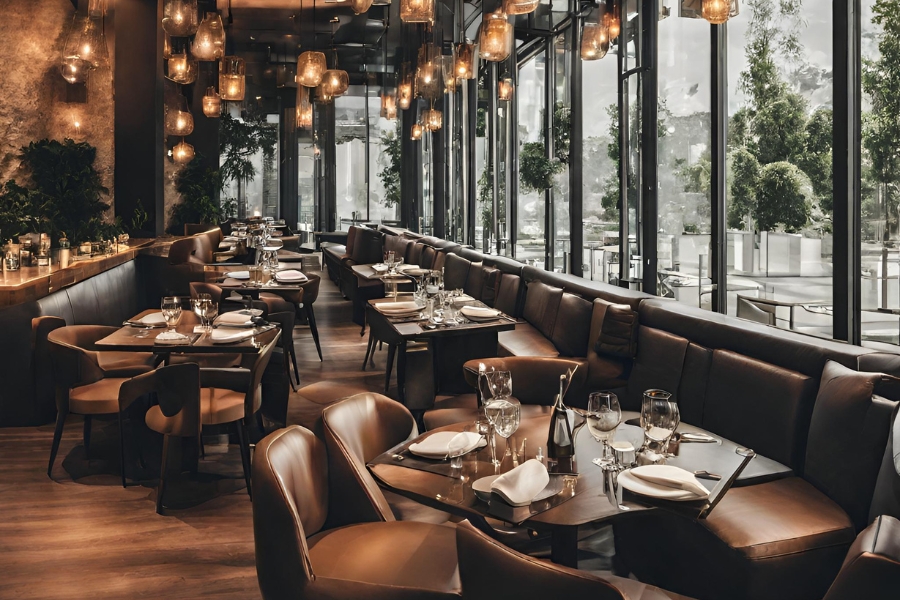The Best Restaurants In Rome To Try

Savoring Rome: A Gastronomy Heaven
In an embodiment of timeless culinary artistry, the best restaurants in Rome serve as bastions of delectable taste and gastronomic innovation that paint a vivid portrait of the city’s lush food culture. The Eternal City offers an eclectic amalgamation of age-old local trattorias, modern fusion restaurants, and exquisite fine dining establishments, that deliver an immersive dining experience.
Amidst the city’s historic squares and cobblestone vicoli, these culinary havens create an enticingly vibrant tapestry of flavors that resonates deeply with the city’s rich history and its sustained penchant for the art of cooking. If you would like have a drink before or after dinner here are some bar suggestions over at https://travelmedia.biz/best-bars-in-rome/
From the traditional pizza Margherita to the exquisitely creamy carbonara, Rome’s gamut of culinary offerings serves to satiate even the most discerning palate. The best restaurants in Rome understand the city’s food philosophy that exalts simplicity and freshness of ingredients. They masterfully blend tradition and innovation, offering an unabashed invitation to explore your gastronomic boundaries.
Whether it’s pairing timeless pasta classics with innovative infusions or reinventing traditional Roman recipes, they deftly curate a gastronomic journey that amply showcases Rome’s vibrant food culture. From the heart of Trastevere to the cobbled streets of the Centro Storico, your quest to savor Rome begins here.
Experience Fine Dining in the Eternal City
Exploring Rome equates to an exciting gastronomic adventure for food enthusiasts the world over. This vibrant city, a mecca of history and art, offers a sophisticated and varied dining experience that proudly reflects its rich culture and traditions. From Michelin-starred establishments serving gourmet cuisine to homely trattorias offering hearty local dishes, the city presents a unique platform for fine dining, tastefully combining the traditional with the contemporary.
Rome’s noteworthy restaurants excel in providing sumptuous meals that go beyond taste and pleasure, creating an unforgettable experience for the senses. In the midst of well-preserved historical structures, guests can savor the finest of Italian cuisine, paired with an extensive collection of world-class wines.
These establishments, firmly rooted in the true spirit of Italian hospitality, pride themselves in using top-quality, locally sourced ingredients that capture the essence and flavors of the region. With breathtaking views of the city as a backdrop, you’ll enjoy dining in the Eternal City as much for the ambiance as for the exquisite culinary offerings.
Authentic Italian Cuisine: Rome’s Top Choices
Rome, the pulsating heart of Italy, is unsurpassed in its rich culinary traditions. Upon setting foot in its cobblestone streets, one cannot help but notice the tantalizing aromas wafting from bustling kitchens and inviting restaurants. It is here that one discovers the embodiment of authentic Italian cuisine, marked by an artful blend of age-old recipes and fresh local produce. For food enthusiasts seeking a quintessential Italian gastronomic experience, few places can parallel the gastronomy heaven that is Rome.
Making the interest of food lovers pique are some stunningly unique and unquestionably Italian dishes offered across Rome. One such restaurant bringing authentic Italian cuisine to the table is Roscioli, located around the ancient Jewish Ghetto area, famed for its pasta, especially Carbonara. Then there’s Da Enzo al 29, set in Rome’s Trastevere district; every dish here, from the Cacio e Pepe to the carciofo alla Romana, promise an epicurean journey to remember. Indeed, Rome outdoes itself when it comes to offering top choices for indulging in authentic Italian cuisine.
Uncovering Rome’s Best Kept Culinary Secrets
With a gastronomic legacy that spans across centuries, Rome is a veritable paradise for food lovers. Walking through the cobbled streets of this timeless city, one would encounter an array of tempting trattorias, age-old bakeries, bustling marketplaces, and delightful gelaterias at every corner.
Yet, not every culinary gem is visible at first glance. Stretches of narrow, winding streets are home to numerous covert eateries, known only to locals and devout food enthusiasts. These hidden jewels, burning dimly with cultural history, are the keepers of Rome’s best kept culinary secrets.
Many of these clandestine restaurants are humble in their appearance, yet their dishes exhibit an unmatched grandeur. One might stumble upon a tiny corner pizzeria presenting wood-fired pizzas, the crust charred to perfection, and toppings comprised of locally forged ingredients.
A subtle wine shop tucked away in a quiet alley might surprise veterans with an extraordinary collection of vintage Italian wines. Venture deeper into these labyrinthine lanes, and you could discover a family-owned osteria serving centuries-old recipes for pasta and seafood delicacies.
The beauty unfolds ever so subtly in Rome, making every corner a food lover’s treasure hunt. Savoring the culinary secrets of the Eternal City is not just about tantalizing your palate, but experiencing pieces of history, served on a platter. For a wider selection of restaurants to visit around the globe go to https://travelmedia.biz/best-restaurants/